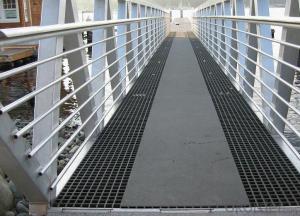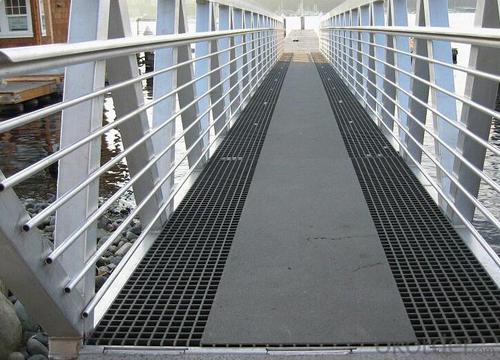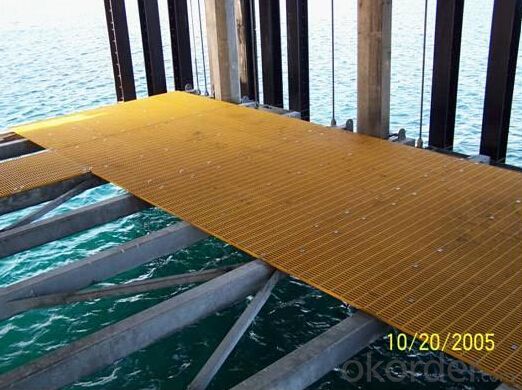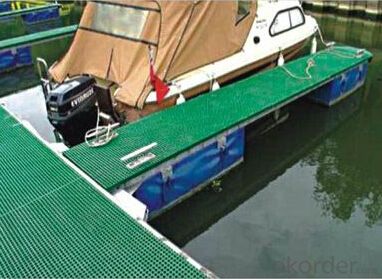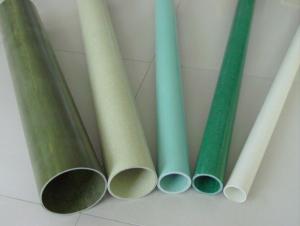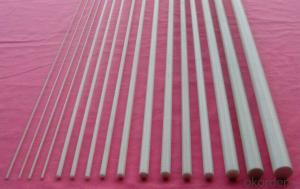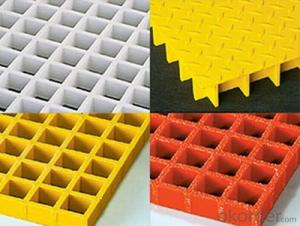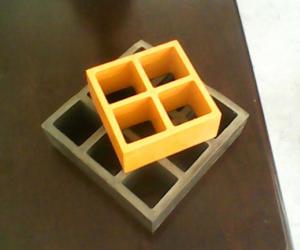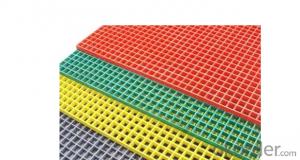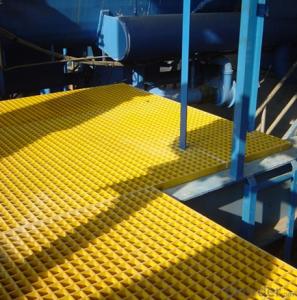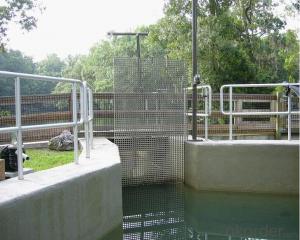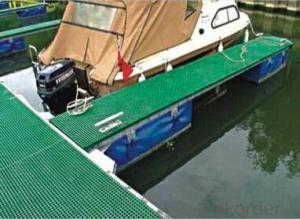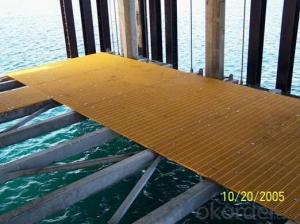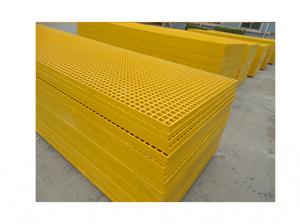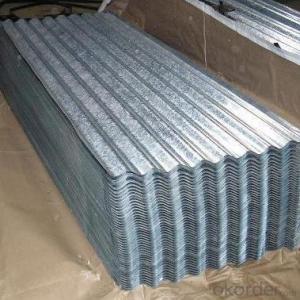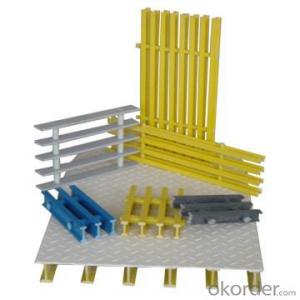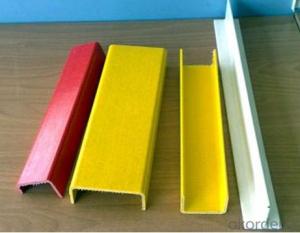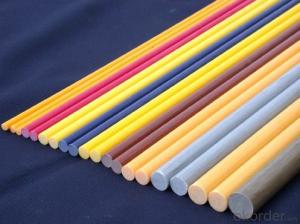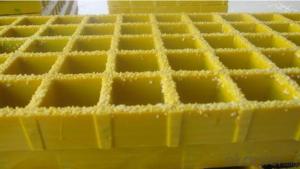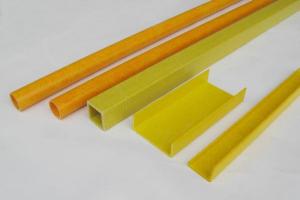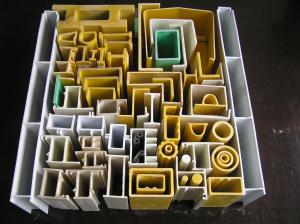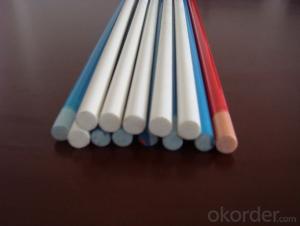FRP Pultrusion Profiles - Skid Resistance FRP Grating with Impact Resistance 2024
- Loading Port:
- Shanghai
- Payment Terms:
- TT OR LC
- Min Order Qty:
- 10 pc
- Supply Capability:
- 8000 pc/month
OKorder Service Pledge
OKorder Financial Service
You Might Also Like
Specification:
FRP molded grating made of vertical and horizontal continuous fiberglass fully soaked in unsaturated polyester resin giving perfect bi-directional mechanical properties. Combining unmatched corrosion resistance with strength, long life and safety, molded grating provide the ultimate in reliable performance, even in the most demanding corrosive conditions. Besides, it is easy to cut and install. CNBM offer the widest selection with panel sizes, colors and slip resistant surfaces, clients can avail FRP grating your specific requirements.
Product Features:
- Light but high loaded strength
- High anti-corrosion and anti-aging
- Easy installation and maintenance
- Low maintenance
- Non-conductive
- Lowest in life cycle cost
- Corrosion Resstance
- Anti-slippery
- Various sizes and color available
Colour Design:
To satisfy customer's design project, CNBM grating offers a wide selection of grating colors to choose from. The standard colors available for fiberglass grating as following:
- Blue
- Red
- Yellow
- Green
- Light Grey
- Dark Grey
Custom colors of fiberglass grating may be available upon request, you can contact us learn more.
Moded Grating Sizes List:
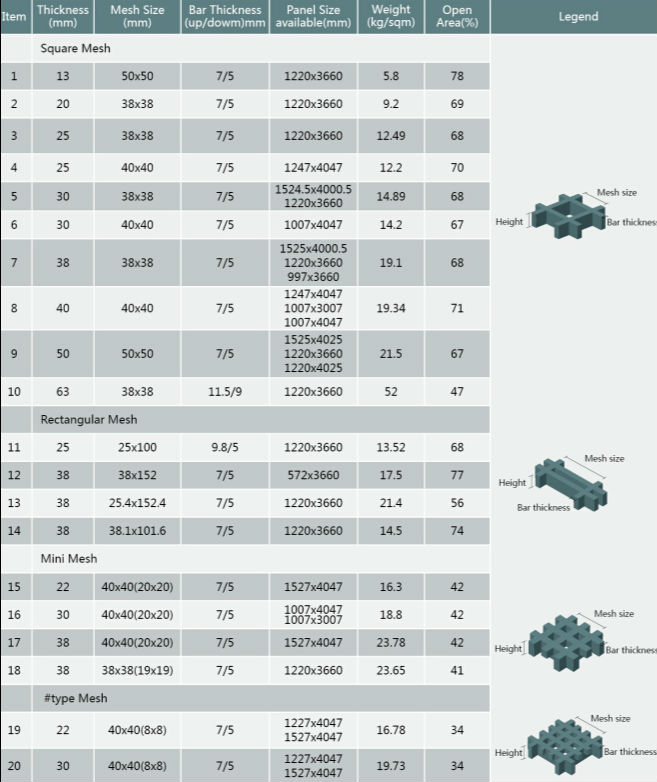
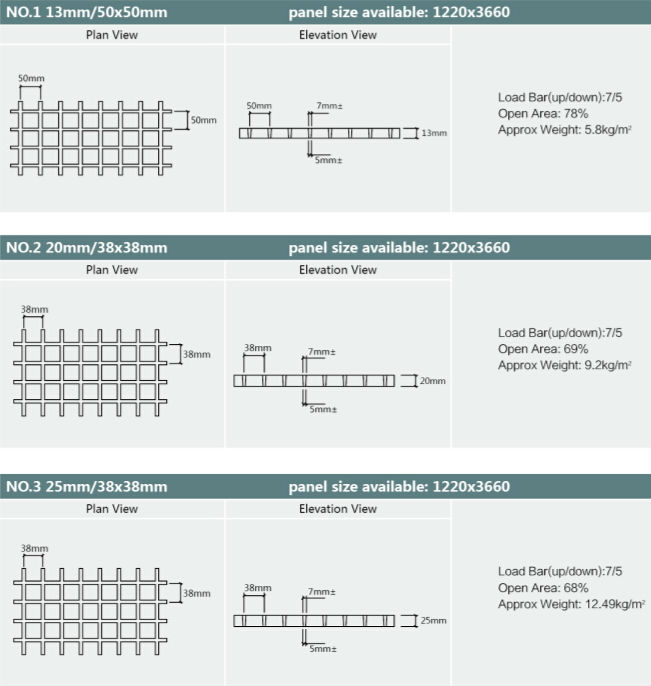
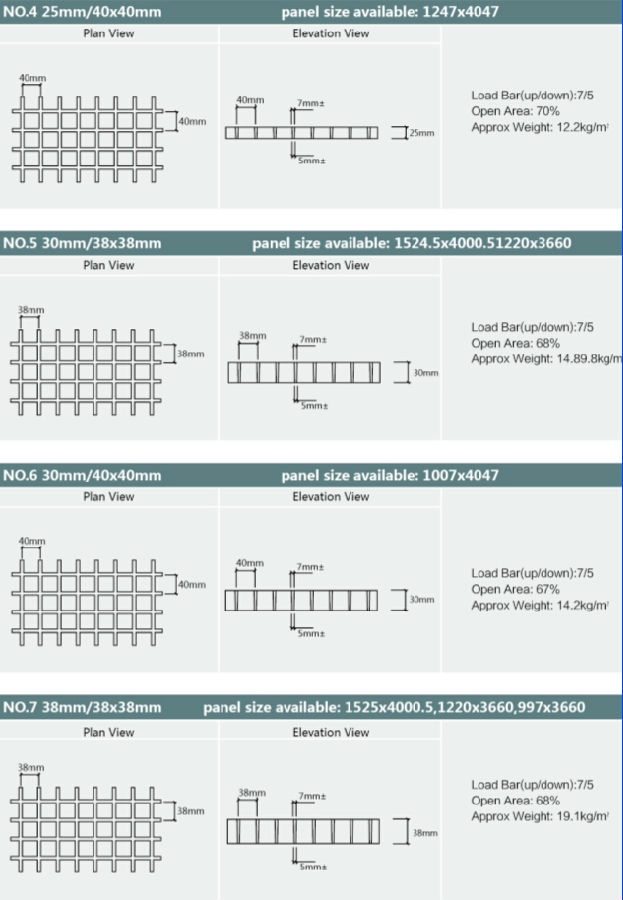
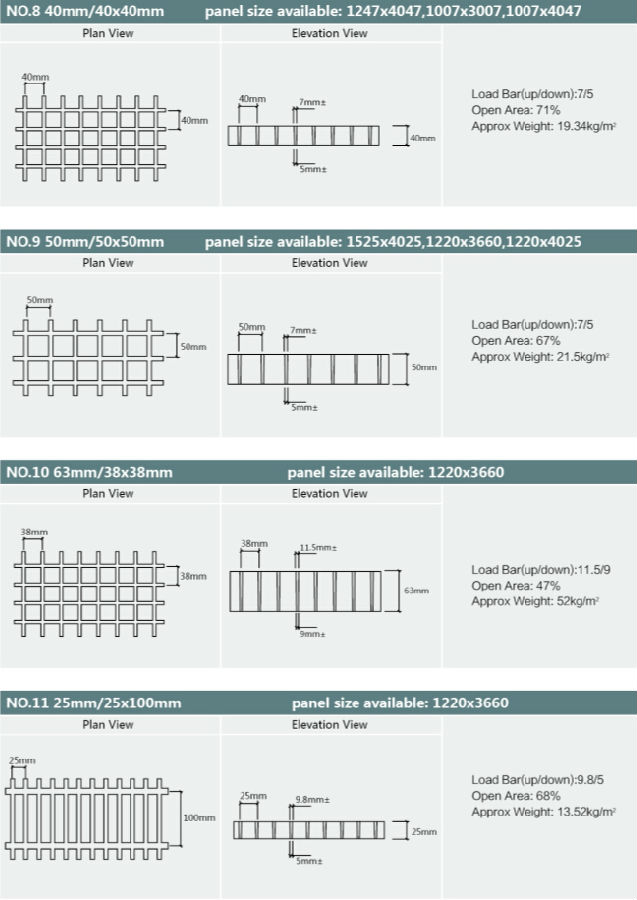
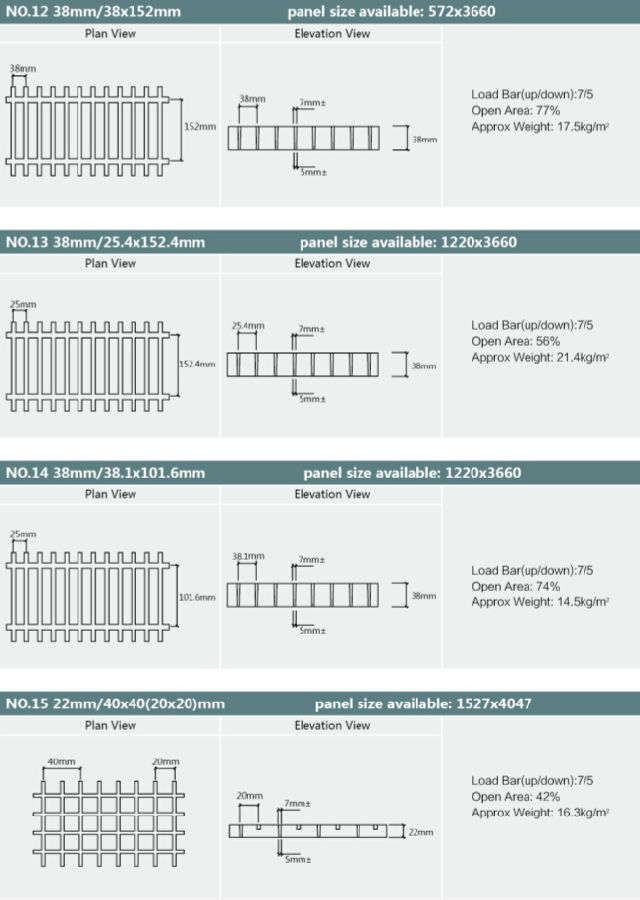
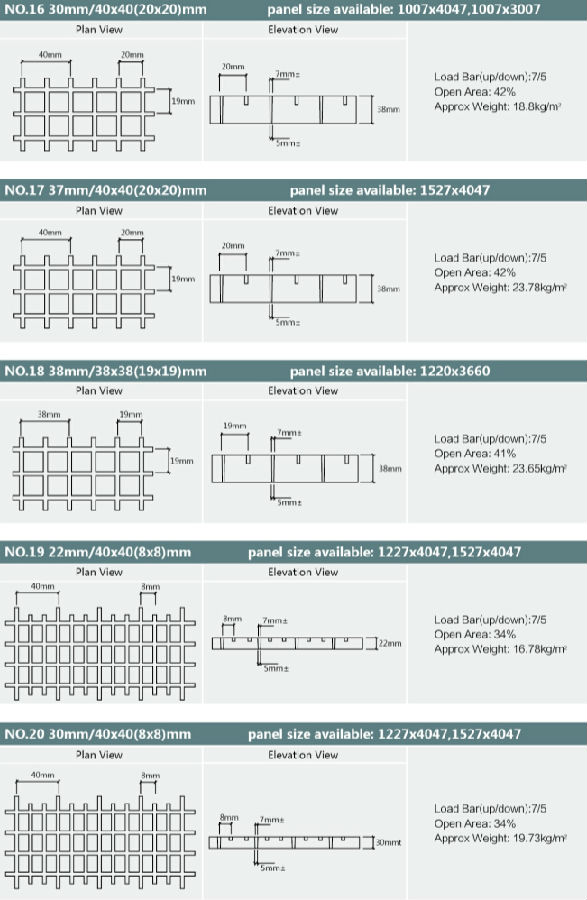
- Q: The manufacturing process of FRP products?
- Each technique has its own characteristics. Production enterprises determine the process method in the selection, according to the basic situation of the enterprise and the production of products, such as mass production and product quality requirements, as well as the technical basis for enterprise capital and production factors such as comprehensive consideration.
- Q: Can FRP pultrusion profiles be used in the aerospace industry?
- FRP pultrusion profiles are suitable for use in the aerospace industry. They possess several advantages that make them ideal for aerospace applications. Firstly, their high strength-to-weight ratios are crucial in the aerospace industry, where weight reduction is a top priority. This lightweight quality contributes to fuel efficiency and increased payload capacity. Secondly, FRP profiles have excellent corrosion resistance, making them perfect for aerospace applications that involve exposure to harsh environments like high altitude, extreme temperatures, and moisture. This resistance ensures the durability and longevity of the components, reducing maintenance and replacement costs. Additionally, FRP materials can be customized to meet specific design requirements, allowing engineers to easily create complex shapes and structures. This flexibility in design leads to enhanced performance and functionality in aerospace applications. Moreover, FRP pultrusion profiles exhibit exceptional fatigue resistance, enabling them to withstand the cyclic loading and stress cycles commonly encountered in aerospace operations. This characteristic ensures the reliability and safety of the components, which is paramount in the aerospace industry. Furthermore, FRP materials offer electrical insulation properties, which can be advantageous in aerospace applications where controlling or minimizing electrical conductivity is necessary. This insulation capability contributes to the overall safety and functionality of the components. In conclusion, FRP pultrusion profiles are a viable and attractive choice for various aerospace applications, including aircraft structures, interior components, radomes, and others. Their high strength-to-weight ratios, corrosion resistance, flexibility in design, fatigue resistance, and electrical insulation properties make them a suitable option for the aerospace industry.
- Q: Can FRP pultrusion profiles be used in the construction of industrial flooring?
- Yes, FRP (Fiber Reinforced Polymer) pultrusion profiles can be used in the construction of industrial flooring. FRP pultrusion profiles are made from a composite material that consists of a combination of strong fibers, typically glass or carbon, and a polymer resin. This combination of materials provides exceptional strength, durability, and corrosion resistance, making FRP profiles highly suitable for industrial flooring applications. One of the main advantages of FRP pultrusion profiles is their high strength-to-weight ratio. This makes them lighter and easier to handle compared to traditional materials such as steel or concrete. Additionally, FRP profiles are non-conductive and non-magnetic, which can be beneficial in certain industrial environments. FRP pultrusion profiles are also highly resistant to various chemicals, moisture, and UV radiation, making them ideal for use in harsh and corrosive environments. They do not rust or corrode like steel and are not affected by moisture or rot like wood, ensuring long-lasting performance and minimal maintenance requirements. Furthermore, FRP profiles can be customized and manufactured in different shapes, sizes, and load-bearing capacities to meet specific industrial flooring requirements. They can be designed to withstand heavy loads, impact, vibration, and other dynamic forces commonly encountered in industrial settings. In summary, FRP pultrusion profiles offer numerous advantages that make them suitable for the construction of industrial flooring. Their high strength, durability, corrosion resistance, and customizable nature make them a reliable and cost-effective choice for industrial flooring applications.
- Q: Can FRP pultrusion profiles be used in protective barriers?
- Yes, FRP (Fiber Reinforced Polymer) pultrusion profiles can be used in protective barriers. FRP pultrusion profiles offer excellent strength, durability, and corrosion resistance, making them suitable for various applications including protective barriers. They can withstand impact, extreme weather conditions, and chemicals while providing a lightweight and cost-effective solution for barriers in industries such as construction, transportation, and safety.
- Q: Can FRP pultrusion profiles be used in architectural or decorative applications?
- Yes, FRP pultrusion profiles can be used in architectural or decorative applications. They offer various advantages such as high strength-to-weight ratio, resistance to corrosion and UV radiation, and design flexibility. Additionally, FRP pultrusion profiles can be customized to match specific aesthetic requirements, making them suitable for architectural and decorative purposes.
- Q: Are FRP pultrusion profiles resistant to moisture absorption?
- Yes, FRP pultrusion profiles are highly resistant to moisture absorption. The inherent properties of the fiberglass and resin used in pultrusion manufacturing make the profiles highly durable and impervious to moisture, ensuring long-term performance and minimal structural damage.
- Q: Can FRP pultrusion profiles be used in renewable energy projects?
- Yes, FRP pultrusion profiles can be used in renewable energy projects. FRP (Fiber Reinforced Polymer) pultrusion profiles offer high strength, durability, and corrosion resistance, making them suitable for various applications in renewable energy projects. They can be used in the construction of wind turbine blades, solar panel frames, and structural supports for renewable energy infrastructure. Additionally, FRP pultrusion profiles can provide cost-effective solutions by reducing maintenance requirements and improving the overall performance of renewable energy systems.
- Q: Can FRP pultrusion profiles be used in automotive applications?
- Yes, FRP pultrusion profiles can be used in automotive applications. They offer several advantages such as high strength-to-weight ratio, corrosion resistance, and design flexibility. Additionally, FRP pultrusion profiles can withstand harsh environmental conditions, making them suitable for various automotive components, including body panels, structural supports, and interior parts.
- Q: Is the test standard for FRP pultruded profiles and FRP gratings the same?
- Different process, production, different uses, testing standards, of course, there are differences.
- Q: Are FRP pultrusion profiles resistant to humidity or moisture?
- FRP pultrusion profiles exhibit remarkable resistance to humidity and moisture. Their inherent ability to repel water absorption stems from the amalgamation of fiberglass reinforcement and a polymer resin matrix. Unlike conventional materials such as wood or metal, FRP pultrusion profiles remain unaffected by moisture or heightened humidity levels, as they neither expand, distort, nor corrode. This moisture resistance renders FRP pultrusions suitable for a diverse array of applications spanning across industries like construction, infrastructure, and marine environments. Moreover, the resistance to moisture can be further bolstered by applying additional protective coatings or surface finishes to FRP pultrusion profiles, thereby escalating their resilience against humidity and moisture.
Send your message to us
FRP Pultrusion Profiles - Skid Resistance FRP Grating with Impact Resistance 2024
- Loading Port:
- Shanghai
- Payment Terms:
- TT OR LC
- Min Order Qty:
- 10 pc
- Supply Capability:
- 8000 pc/month
OKorder Service Pledge
OKorder Financial Service
Similar products
Hot products
Hot Searches
Related keywords
